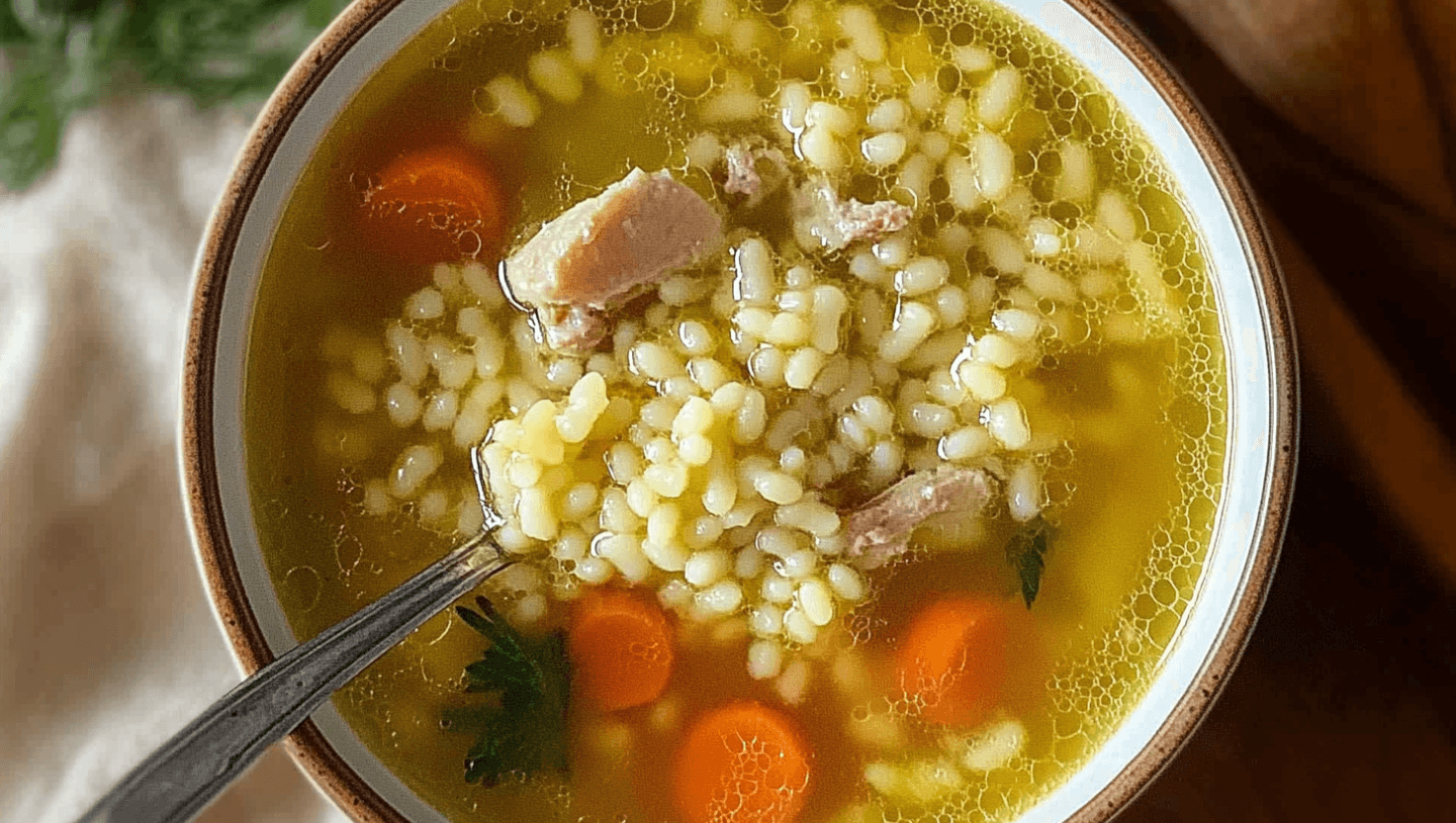Pastina, a staple in Italian cuisine, offers a unique blend of comfort, nutrition, and versatility. Its tiny shapes make it easy to prepare and digest, appealing to people of all ages. Beyond its comforting taste, pastina supports energy needs, digestive health, and emotional well-being. This article explores the reasons pastina remains a beloved choice in kitchens worldwide.
Key Takeaways
| Aspect | Details |
|---|---|
| Nutritional Value | Rich in carbohydrates and essential nutrients like iron and B-vitamins. |
| Digestive Benefits | Gentle on sensitive stomachs and ideal for all ages. |
| Comforting Qualities | Provides emotional and physical solace during illness or stress. |
| Cultural Significance | A cherished ingredient in traditional Italian family meals. |
| Convenience | Quick to prepare and adaptable to a variety of recipes. |
Understanding Pastina: What Is It?
Definition and Characteristics of Pastina
Pastina, meaning “little pasta” in Italian, consists of small, delicate shapes crafted for versatility. These tiny pieces, often less than a quarter of an inch in size, cook quickly and absorb flavors beautifully, making them perfect for soups, broths, and light dishes.
Popular shapes include stelline (tiny stars) and acini di pepe (small beads), which enhance both the texture and visual appeal of meals. Pastina’s compact size allows it to cook evenly in minutes, making it a favorite for both novice and experienced cooks.
Common Varieties of Pastina
Pastina comes in an array of shapes that cater to different recipes. Stelline stars add charm to simple soups, while acini di pepe pairs well with cold salads. Other forms, such as alfabeto (alphabet pasta) or quadrettini (little squares), bring playfulness to the table, especially for children.
Its versatility ensures it remains a pantry staple, seamlessly transitioning between traditional and contemporary dishes. Whether served warm in a broth or cold in a salad, pastina adapts effortlessly to meet the needs of the occasion.
Nutritional Profile of Pastina
Macronutrient Composition
Pastina is primarily composed of carbohydrates, making it an excellent source of energy. This quality makes it a reliable choice for meals that aim to sustain energy levels throughout the day. When combined with fiber-rich vegetables or protein-packed additions, pastina becomes part of a balanced and fulfilling dish.
Its naturally low-fat content also aligns with dietary recommendations for cardiovascular health, further solidifying its place in nutritious meal planning.
Vitamins and Minerals in Pastina
Enriched varieties of pastina contribute valuable nutrients to the diet. B-vitamins, such as thiamine and niacin, play essential roles in energy production, while iron supports oxygen transport in the blood. Including pastina in meals ensures a steady intake of these vital nutrients.
For additional insights into pasta nutrition, explore this resource to see how pastina compares with similar options like orzo.
Digestive Benefits of Pastina
Easy Digestibility
One of pastina’s standout qualities is its easy digestibility, making it suitable for individuals with sensitive stomachs or recovering from illness. Its soft, tender texture is gentle on the digestive system, offering nourishment without causing discomfort.
This characteristic makes it a preferred choice during periods of recovery or for those seeking light, uncomplicated meals that provide both comfort and sustenance.
Pastina for Sensitive Diets
Individuals with dietary restrictions often turn to pastina as a reliable meal option. Its neutral flavor and small size pair well with gentle ingredients like steamed vegetables or pureed proteins, creating customizable dishes tailored to specific needs.
Gluten-free alternatives made from rice or corn ensure that pastina remains accessible to those with gluten sensitivities, broadening its appeal to a wider audience.
Pastina as a Comfort Food

Cultural Significance in Italian Cuisine
In Italian households, pastina transcends its role as a simple ingredient. It symbolizes care, warmth, and tradition. Families often prepare it for children, the elderly, or anyone needing comfort, showcasing its deep-rooted place in culinary culture.
To explore traditional Italian pastina recipes, visit this article. These dishes highlight the enduring appeal of pastina across generations.
Emotional and Physical Comfort
Few foods evoke as much comfort as a warm bowl of pastina. Its delicate texture and mild flavor provide both physical and emotional solace during challenging times. From soothing colds to evoking childhood memories, pastina offers a sense of familiarity and care.
Discover how pastina as a comfort food continues to resonate with people through this resource.
Quick and Versatile Meal Option
Speedy Preparation
One of pastina’s most appealing qualities is its short cooking time, typically requiring only a few minutes to prepare. This feature makes it an invaluable ingredient for busy households and individuals who want a quick, nourishing meal. Its adaptability allows it to transition seamlessly from simple broths to more elaborate recipes.
A classic example is pastina with eggs, also called “Italian egg drop soup.” This dish involves whisking eggs into simmering pastina and broth, creating a protein-rich meal in under 10 minutes. Such quick recipes demonstrate how pastina simplifies meal preparation without compromising on taste or nutrition.
Versatility in Various Dishes
Pastina’s versatility makes it a staple in many kitchens. It serves as the perfect base for countless recipes, ranging from warm soups to refreshing salads. For instance, a cold pastina salad with diced cucumbers, cherry tomatoes, and a light vinaigrette offers a delightful summer meal. Alternatively, baked pastina with marinara sauce and melted cheese provides a comforting, hearty dinner during colder months.
Its ability to complement a wide range of ingredients ensures that pastina fits any occasion, whether casual family meals or creative culinary experiments.
Pastina’s Role in Immune Support
Nutrient-Rich Broth Combinations
Pairing pastina with nutrient-packed broths enhances its immune-supporting properties. Ingredients such as garlic, ginger, or spinach can transform a simple pastina soup into a meal loaded with vitamins and minerals. These additions not only boost the immune system but also elevate the overall flavor profile of the dish.
A popular choice is chicken pastina soup, where the addition of bone broth provides collagen and amino acids that promote gut health and immunity. A squeeze of lemon or a sprinkle of turmeric further enhances the soup’s healing properties, making it a go-to remedy for colds and flu.
Comfort During Illness
Pastina is often considered a “sick day food” because of its gentle, soothing qualities. When appetite diminishes during illness, a warm bowl of pastina in broth offers both nourishment and hydration. Its soft texture and mild taste make it an ideal choice for individuals seeking comfort without straining their digestive systems.
Additionally, its versatility allows for subtle flavor enhancements tailored to the individual’s preferences, whether adding shredded chicken for protein or fresh herbs for a burst of aroma and taste.
Suitable for All Ages

Pastina for Children
Parents often choose pastina as a first solid food for young children due to its small size, soft texture, and ease of digestion. It can be served plain or paired with pureed vegetables and mild cheeses to create a nutrient-dense meal that appeals to a child’s developing palate.
Furthermore, pastina’s playful shapes, like stars or alphabet letters, make it fun and engaging for children, encouraging them to enjoy their meals. These qualities ensure that pastina remains a timeless choice for families.
Pastina for the Elderly
Pastina also caters to the nutritional needs of older adults. Its soft consistency makes it easy to chew and digest, while its adaptability allows caregivers to customize dishes to meet specific dietary requirements. For example, a simple pastina dish with spinach and Parmesan provides essential nutrients while remaining gentle on the stomach.
This ease of preparation and consumption highlights why pastina is often included in meal plans for elderly individuals, especially those requiring light, nourishing foods.
Low-Fat and Heart-Healthy
Nutritional Benefits of Low-Fat Content
Pastina’s naturally low-fat composition aligns with heart-healthy eating principles. When paired with heart-friendly ingredients such as olive oil, garlic, or lean proteins, it contributes to meals that are both delicious and supportive of cardiovascular health.
For example, sautéed pastina with kale and a touch of olive oil creates a nutrient-dense dish that’s flavorful and packed with health benefits. Its ability to blend seamlessly with such ingredients makes it a valuable addition to heart-conscious diets.
Incorporating Pastina into a Balanced Diet
Creating balanced meals with pastina is simple and rewarding. By adding roasted vegetables, beans, or lean meats, you can craft dishes that provide a complete spectrum of nutrients. Pastina’s adaptability makes it a versatile choice for both everyday meals and special occasions.
Meal prepping with pastina is another effective way to ensure you have quick, nutritious options on hand. Its ability to retain flavor and texture when reheated enhances its practicality for those with busy schedules.
Energy-Boosting Qualities
Carbohydrates as an Energy Source
This tiny pasta provides an excellent source of carbohydrates, which are vital for maintaining energy throughout the day. Moreover, its easily digestible nature allows the body to access this energy quickly, making it ideal for meals that need to fuel active lifestyles. Additionally, its mild flavor complements various ingredients, enabling you to create balanced dishes without overwhelming the palate.
For example, combining it with roasted vegetables and olive oil offers a meal that balances quick energy with fiber and healthy fats. This combination not only sustains energy levels but also helps prevent the crashes commonly associated with less nutritious alternatives.
Ideal Pre-Workout Meal
For athletes or those who engage in regular physical activity, this ingredient can serve as an excellent pre-workout meal. Its ability to provide easily digestible energy ensures the body feels fueled without feeling heavy or uncomfortable. Furthermore, its versatility allows it to be tailored to individual preferences.
Consider preparing a simple dish tossed with steamed spinach and a sprinkle of Parmesan cheese. This combination delivers essential nutrients and carbohydrates to power through workouts while being gentle on the stomach. For an added boost, incorporating lean proteins or a drizzle of olive oil enhances both flavor and nutritional benefits.
FAQs
What is it?
This small pasta refers to shapes often used in broths, soups, or light dishes. Not only is it a staple in Italian cuisine, but it’s also renowned for its comforting and versatile nature.
How is it traditionally prepared?
Traditionally, it is cooked in a flavorful broth or served with simple ingredients like butter and Parmesan cheese. These classic preparations highlight its ability to provide nourishment and comfort. For more details, explore Pastina Soup: A Classic Italian Comfort Food.
Is it suitable for gluten-free diets?
Yes, gluten-free varieties are available, often made from alternative ingredients such as rice or corn. These options ensure that individuals with gluten sensitivities can still enjoy dishes made with this ingredient.
Can it be used in cold dishes?
Absolutely. It works wonderfully in cold salads when combined with fresh vegetables, herbs, and a light dressing. Additionally, its small size adds texture and visual appeal to refreshing summer meals.
Where can it be purchased?
This ingredient is widely available in most grocery stores, typically found in the pasta aisle. Moreover, it can also be purchased online through various retailers offering both traditional and gluten-free options.
Final Thoughts
This Italian staple combines comfort, nutrition, and versatility in a way that few ingredients can match. Whether used in a hearty broth to soothe during illness, a quick salad for a busy day, or a warm dish shared with family, it proves its value time and again.
Moreover, its adaptability ensures it caters to diverse tastes and dietary needs, making it a cherished ingredient across generations. By incorporating it into your meals, you not only embrace a part of Italian tradition but also enjoy a nutritious and satisfying addition to your diet. For recipe inspiration, visit Pastina Soup: A Classic Italian Comfort Food.

